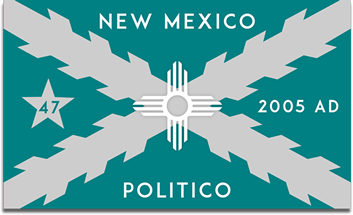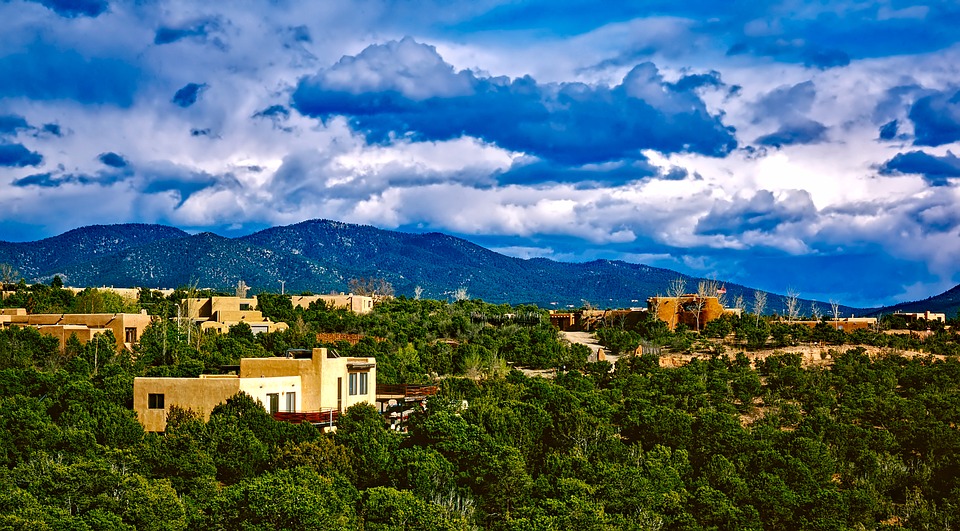New Mexico’s state question, “red or green,” accurately describes New Mexico and its focus on Hispanic culture and spicy food. However, I’d argue that the divide between those in urban New Mexico and those in rural New Mexico remains far larger and holds real, political consequences.
Growing up in Roswell, I had always heard about the differences between the urban cities and the rural towns. I nodded and did not think it could be that drastically different. After all, we all reside in the same state and share the same appreciation for Hispanic culture and our landscape. It wasn’t until I moved to Albuquerque that I witnessed the divide for myself. The differences lie between the urban and rural, liberal and conservative, and red and green.
The travel between my current residence and hometown feels like venturing between two different states which hold different values. This can be shrugged off as natural differences between rural and urban areas, however, these differences hold real political implications. The growing differences reveal themselves most with Governor Michelle Lujan Grisham’s administrative priorities. Gov. Lujan Grisham won on a “progressive” platform that excites urban centers but terrifies rural towns and communities. Her stances reached a boiling point when her gun policies instigated a showdown between Grisham and most of New Mexico’s county sheriffs.
California has a similar, yet more severe problem than ours. The urban centers of California have outweighed and dictated state policy leaving many rural Californians in the dust. This dynamic has led to very recent proposals to split the state into two, or even three, parts so every Californian could have representatives reflecting his or her values. New Mexico is fortunate in that urban cities do not hold as strong of a policy stranglehold over rural towns here as Los Angeles and San Francisco do over Bakersfield and Stockton there. They still do, as shown in every election and a breakdown of county and district politics, but not severely enough to allow unchecked radicals to morph the state to fit one set of progressive values. Gov. Grisham has tried, and the unified voices of rural, conservative New Mexicans have fought back.
Regular, respectful dialogue between these spheres of influence is urgently needed to further prevent political tensions that could do more harm to the process and institutions that serve us. I think most New Mexicans don’t hope for the state to split into two smaller states, or for overall influence in the state to flip from urban, more liberal politics to rural, more conservative politics. Maybe all it would take would be for any of our elected representatives to approach with understanding these differences within New Mexico. Currently, New Mexico has a winner-take-all policy in Presidential elections; meaning that all the state’s electoral votes go towards one candidate. Other states, like Nebraska and Maine, the votes are proportionally distributed based on districts. If New Mexico were to adopt this, the rural towns that lay outside of the Albuquerque and Santa Fe’s districts could a say in who they vote for in presidential elections. This would allow them to have a vote independent of the larger cities and, more importantly, know that their specific vote cannot be invalidated because of the larger cities. Thus, this could help prevent the one sidedness that happens every four years.
This issue reflects a national debate around the Electoral College. Democratic candidates, like Sen. Elizabeth Warren, wish to abolish this Constitutional institution for a national popular vote or true Democracy, rule of the mob. This proposed abolishment would further reflect New Mexico’s rural versus urban problem but on a national scale where we’d have urban coastal populations dictating policy towards smaller ‘fly-over’ states as they like to refer to us as. In the same way Albuquerque and Santa Fe seem to control New Mexico’s political decisions, a popular vote would ensure that America’s largest population centers control who occupies the executive branch indefinitely.
So next time the red or green debate comes up, think about the differences that extend beyond the texture and color of our beloved chile. These differences may cause the aforementioned political tension come every election and legislative session but, as our state’s question points out, the divide makes New Mexico a unique state that welcomes anyone and everyone…just as long as they like chile.

